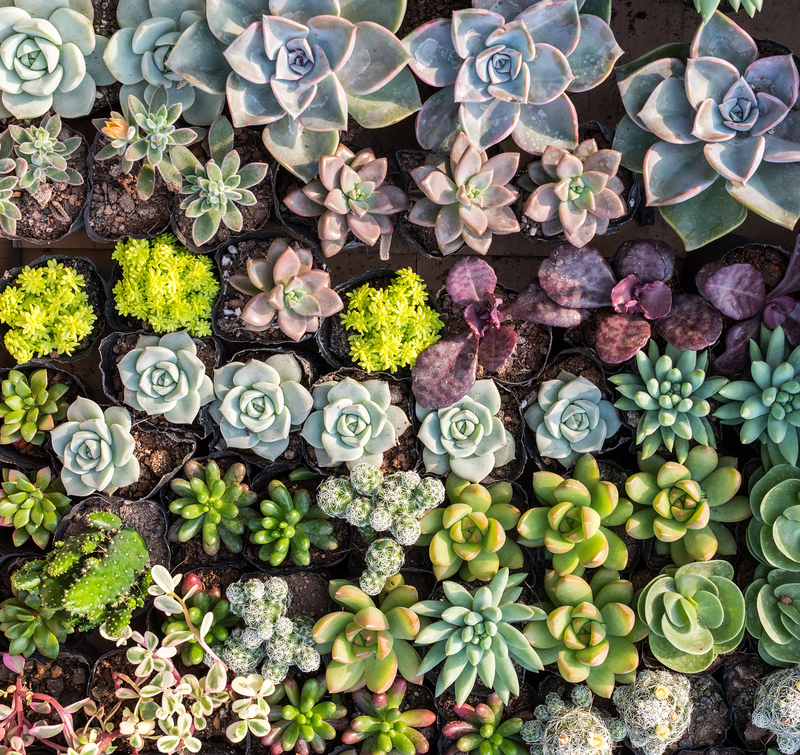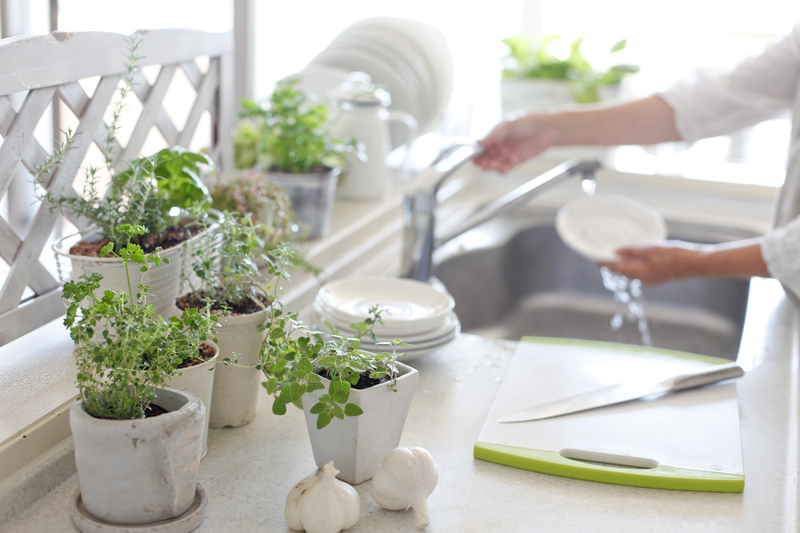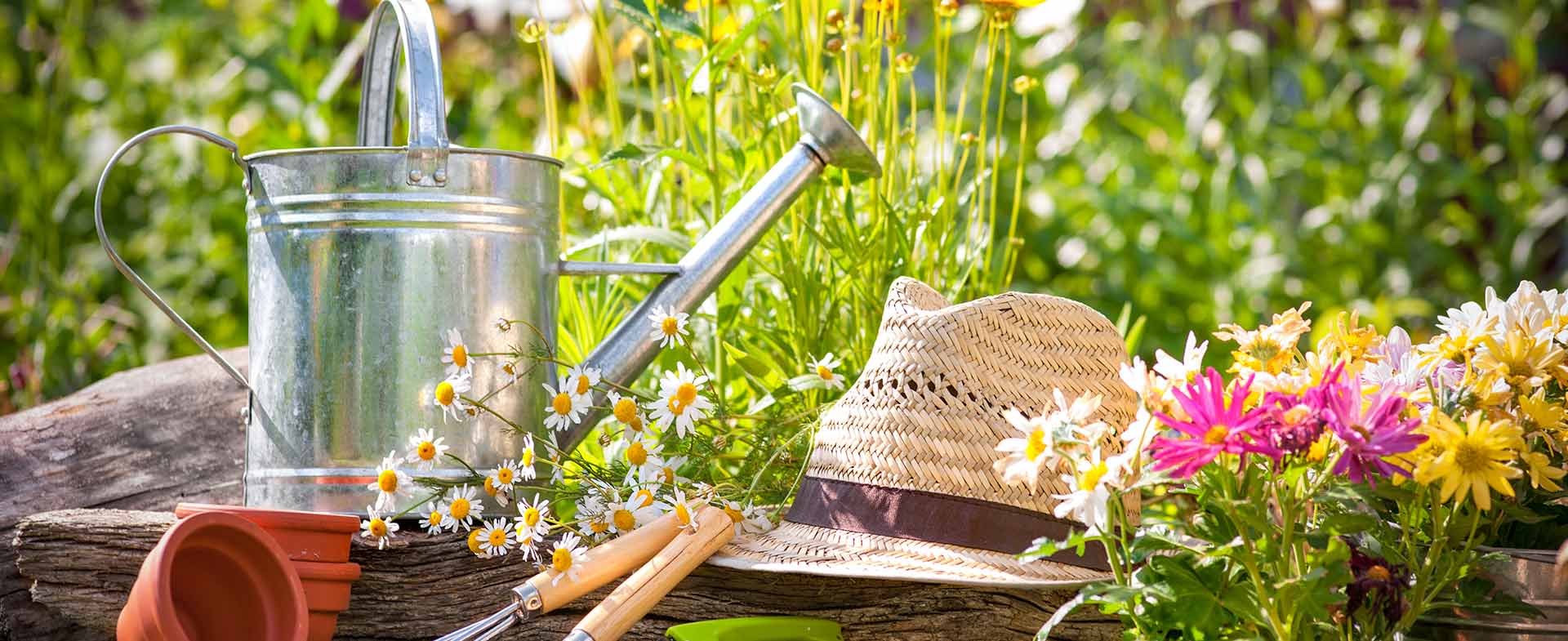Discover the Essentials of Container Gardening
Posted on 03/07/2025
Discover the Essentials of Container Gardening
Container gardening is rapidly gaining popularity among both seasoned and beginner gardeners. Whether you have a sprawling backyard or a tiny apartment balcony, growing plants in containers allows you to cultivate a thriving garden anywhere. This comprehensive guide will help you discover the essential aspects of container gardening, from choosing the right vessels and soil to selecting suitable plants and maintaining your little green oasis.

What is Container Gardening?
Container gardening is the art and science of growing plants exclusively in containers rather than directly in the ground. These containers can range from decorative ceramic pots and simple clay planters to recycled buckets, window boxes, and hanging baskets. This urban-friendly gardening technique empowers anyone to experience the joy of gardening, regardless of space constraints.
Why Choose Container Gardening?
- Space Efficiency: Ideal for small living spaces like apartments or urban homes without yards.
- Mobility and Flexibility: Easily relocate plants to capture more sunlight, dodge inclement weather, or transform your living area.
- Control: Manage soil quality, watering, and nutrients precisely for each plant.
- Creativity: Mix and match various containers, plants, and displays to reflect your style.
- Season Extension: Bring delicate plants indoors during colder months, extending the growing season.
The Best Containers for Your Urban Garden
Selecting the right container is one of the essentials of container gardening. The choice depends on the plant's needs, your available space, and your aesthetic preferences.
Types of Containers
- Terracotta & Clay Pots: Classic and breathable, these allow excellent root aeration but dry out quickly.
- Ceramic Pots: Glazed varieties retain moisture longer and come in vibrant hues, but are heavier and more fragile.
- Plastic Pots: Lightweight, affordable, and moisture-retentive, making them ideal for beginners.
- Wooden Planters: Attractive and good-looking, though they may degrade over time if not treated.
- Metal Containers: Trendy but can heat up quickly and may rust over time.
- Recycled & DIY Options: Get creative with old buckets, shoes, tires, or crates for an eco-friendly approach.
Choosing the Size and Shape
The size and depth of your container are crucial for plant health. Deep-rooted plants like tomatoes or carrots need larger, deeper pots, while shallow-rooted herbs and succulents can thrive in smaller or shallower vessels. Ensure your container has sufficient drainage holes to prevent waterlogging.
Soil Essentials: The Foundation of Healthy Growth
The soil in container gardening is not the same as your backyard's. Healthy, nutrient-rich potting mix is a must. Regular garden soil is typically too dense for containers, leading to poor drainage and compaction.
What Makes an Ideal Potting Mix?
- Well-Draining: Prevents water from accumulating and roots from rotting.
- Lightweight: Allows for aeration and root development.
- Nutrient Rich: Supplies essential elements for strong plant growth.
- Moisture Retentive: Holds just enough water without becoming soggy.
Many commercial potting mixes are designed for container gardening essentials and usually contain a blend of peat moss, coco coir, perlite, vermiculite, compost, and sometimes slow-release fertilizers. For specialized plants like succulents or orchids, choose soil mixes formulated for their particular needs.
Selecting the Right Plants for Container Gardens
One of the joys of container gardening is the diversity you can cultivate. You can create a themed herb garden, dazzling flower arrangements, or even grow vegetables on your patio.
Plants That Thrive in Containers
- Herbs: Basil, rosemary, thyme, mint, chives, and parsley are popular and practical.
- Vegetables: Tomatoes, peppers, lettuce, radishes, beans, and carrots serve urban gardeners well.
- Flowers: Petunias, marigolds, pansies, geraniums, and begonias add color and vibrancy.
- Succulents & Cacti: Great for those who prefer low-maintenance plants.
- Small Fruit Plants: Dwarf strawberries, blueberries, and even lemons can be container-grown.
Tips for Plant Selection
- Sunlight Requirements: Match your plant's light needs with the available conditions on your balcony, deck, or windowsill.
- Plant Size: Avoid overcrowding by considering each plant's mature dimensions.
- Growth Habits: Combine upright and trailing species for attractive, layered displays.
- Watering Needs: Group plants with similar hydration requirements together.
Container Gardening Maintenance: Key Techniques for Success
Proper care is critical to ensure robust, happy plants in your container garden. The confined environment of pots and planters means you'll need to pay closer attention to certain maintenance tasks.
Watering Wisely
Watering is arguably the most vital aspect of container gardening care. Containers dry out faster than ground beds, so monitor moisture levels frequently. It's better to water thoroughly, allowing excess to drain, than to drizzle lightly. Early morning is the best time to water, minimizing evaporation and fungal risks.
- Check moisture by inserting your finger an inch into the soil; water if it feels dry.
- Use self-watering pots or add saucers to retain moisture for thirsty plants.
- Group containers together to create a microclimate and reduce drying.
Feeding Your Plants
Plants growing in containers consume nutrients quickly and need regular feeding. Mix slow-release fertilizer into your potting mix during planting, then supplement with liquid feed every 2-4 weeks depending on the plant's type and growth stage.
- Leafy greens and blooming flowers benefit from high-nitrogen and balanced fertilizers, respectively.
- Fruit and root crops may require higher potassium levels for robust development.
Pruning and Deadheading
Regular pruning keeps plants healthy and encourages continuous growth. Pinch back leggy herbs, snip spent flower heads, and remove any damaged leaves. This will prevent disease, promote bushier growth, and keep your display looking its best.
Repotting and Refreshing Soil
Most container plants will eventually outgrow their pots or deplete the soil's nutrients. Repot fast-growing annuals and perennials every 1-2 years. When doing so:
- Choose a slightly larger container if roots are crowded.
- Trim away dead roots and foliage.
- Add fresh potting mix to provide new nutrients.
Best Practices for Beautiful and Productive Container Gardens
Designing with Style and Function
Container gardening offers endless possibilities for creativity. With a few design tips, your potted arrangements will be both functional and beautiful:
- Thriller, Filler, Spiller Technique: Combine a tall, striking plant (thriller), bushy mid-level plants (fillers), and trailing species (spillers) for stunning arrangements.
- Color Coordination: Harmonize flower colors and foliage for a cohesive look, or embrace bold contrasts for energy.
- Vary Heights and Sizes: Use pedestals, plant stands, and hanging baskets to create dynamic, multi-level gardens.
- Edible Landscapes: Mix edible and ornamental plants for a feast for the eyes and table.
Seasonal Adjustments
Extend your gardening enjoyment by swapping plants with the seasons:
- Spring/Summer: Fill pots with sun-loving annuals, herbs, and vegetables.
- Autumn: Add cold-tolerant greens and decorative foliage like ornamental cabbages.
- Winter: Move tender species indoors or replace with evergreens and winter-flowering plants.
Common Challenges in Container Gardening (and How to Overcome Them)
While container gardening is user-friendly, several issues are common. Here's how to address them:
- Drought Stress: Containers dry out fast in hot weather. Use mulch, add water-retaining crystals to soil, and cluster pots together to reduce evaporation.
- Root Rot: Caused by overwatering or poor drainage. Always use pots with holes and avoid leaving containers in puddles.
- Pests: Aphids, mites, and slugs love potted plants. Regularly inspect for critters, use natural repellents, and remove affected leaves.
- Nutrient Deficiency: Yellowing leaves or poor growth often suggest depleted soil. Fertilize as needed or replace potting mix.
- Leggy Plants: Insufficient sunlight results in spindly growth. Move containers to sunnier spots and rotate for even exposure.
Container Gardening for Small Spaces
If you're short on space, container gardening still presents a world of possibilities.
- Go Vertical: Use wall-mounted planters, shelves, or trellises to take advantage of unused vertical space.
- Hanging Baskets: Suspend pots from ceilings, balconies, or fences for lush, cascading effects.
- Rail Planters: Line balcony or deck railings with slim boxes to grow herbs, flowers, or greens.
- Stacked Planters: Modular systems or DIY stacks add layers of greenery to even the tiniest corners.
Benefits of Container Gardening
- Accessibility: Raised pots and bench planters make gardening easier for those with limited mobility.
- Disease Control: Isolate sick plants quickly by moving pots, reducing spread.
- Pest Management: Physical barriers and container swaps fend off many common pests.
- Personal Satisfaction: Experience the joy of watching your plants flourish anywhere, anytime!

Getting Started with Your Container Garden: Essential Tips
Ready to embark on your container gardening journey? Here's a quick checklist to get you started:
- Choose Your Location: Watch sunlight patterns and pick a spot that matches your chosen plants' requirements.
- Select Suitable Containers: Consider size, material, drainage, and visual appeal.
- Use High-Quality Potting Mix: Never skimp on soil quality.
- Pick the Right Plants: Group by watering, light, and growth habits.
- Water and Feed Regularly: Containers need consistent attention.
- Monitor for Pests and Disease: Early detection is key to healthy plants.
- Have Fun and Experiment: Try new combinations and color schemes as you gain experience.
Conclusion: Unleash Your Creativity with Container Gardening
Container gardening is a versatile, rewarding way to bring nature into any living space. With the right essentials for container gardening--including proper containers, quality soil, thoughtfully chosen plants, and attentive maintenance--you'll soon be cultivating beautiful and productive gardens even in the heart of the city.
Whether you dream of fresh herbs for your culinary adventures, a vibrant patio filled with flowers, or healthy vegetables for your table, container gardening opens endless possibilities for gardeners of all experience levels.
Start small, be consistent, and enjoy the marvels you can create with just a pot and a plant!

